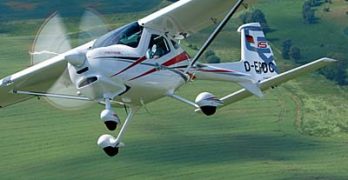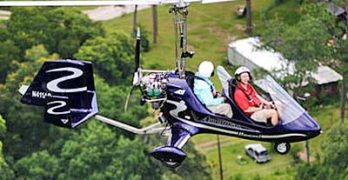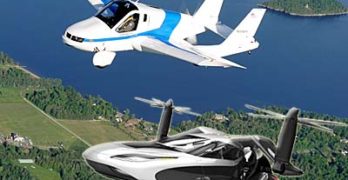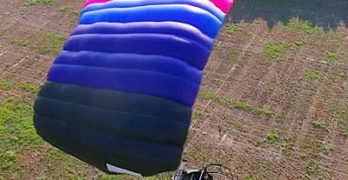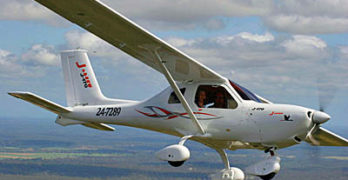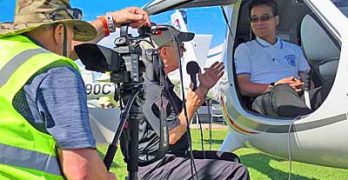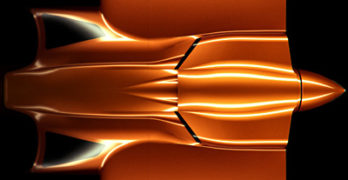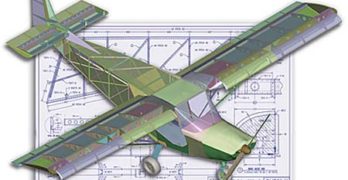Sky Arrow, now available in blue and white (you hear the humor about “Any color you like…” on the video) from Magnaghi Aeronautica, the large Italian aerospace company that took over the Sky Arrow design and manufacturing after the previous company failed. This beautiful flying Light-Sport Aircraft was in limbo for a few years but Magnaghi rescued it. Sky Arrow has often been used for training disabled persons thanks to hand controls. Here what changed after Magnaghi took over.
Search Results for : CT AND hand control
Not finding exactly what you expected? Try our advanced search option.
Select a manufacturer to go straight to all our content about that manufacturer.
Select an aircraft model to go straight to all our content about that model.
Remos GXiS — A Mercedes of LSA
Oshkosh is on! OK, not today. The big show starts tomorrow, but you wouldn’t know it as airplanes are already arriving in droves and the grounds are rapidly filling. Time for EAA’s summer celebration of flight to begin!
Although I’m a longtime regular, today I did something I’ve never done. I flew out of KOSH and then returned. If you’ve never flown into Oshkosh during AirVenture, you may not know what an experience such an arrival can be. This is the world’s busiest airport for one week. Airplanes arrive every few minutes and all of them do so in a unique, follow-the-plane-in-front-of-you method where no pilot uses the radio. Departing was fairly simple. Arriving is always an eye-opening experience.
I did my departure and reentry with Remos PR & Marketing guy Patrick Holland-Moritz, a former German aviation magazine writer. We flew in the brand new Remos GXiS. Flying into Oshkosh was a repeat treat for me, but I think Patrick was blown away by the flowing river of airplanes of all types.
Flying America’s First Homegrown Modern Gyroplane
Once upon a time… gyrocopters were an American invention. Igor Benson was such an important pioneer that many fixed wing pilots refer to all such flying machines as “Bensen gyros.” Starting in the 1950s, he hit on a good combination of ideas that made the new sector flourish… for a time.
Gyros are small rotary winged aircraft that resemble helicopters in some ways — all have a spinning wing above the occupants. However, gyros work by the air moving across the blades of the rotor disk; their rotors are not powered. Most readers likely don’t need a technical discussion. Suffice it to say gyros and helos are far from the same animal no matter how much they might look like one another.
Yet in the last couple decades things began to change, dramatically. Perhaps to accentuate their differences, modern producers prefer “gyroplanes” while the older Bensen types are often referred to as “gyrocopters.” The old and new are different in important ways.
Flying Car Racing Event & Terrafugia New Weight
If my title confuses you, regrets. The two are related in my mind but not in present-day fact. Nonetheless, I found both interesting and hope you do, too.
First, the fact. Terrafugia, of current Transition Roadable Airplane or flying car fame, won a weight exemption up to 1,800 pounds. This blows past the 1,680 pound exemption won by Icon Aircraft for their A5 LSA seaplane (only 1,510 pounds of which they chose to use). Earlier Terrafugia was granted an exemption to the seaplane LSA weight of 1,430 pounds but that didn’t prove to be enough.
A problem, perhaps the major problem, for Terrafugia is contained in the Federal Motor Vehicle Safety Standards (and let’s be just as government as we can be to go with the inescapable abbreviation of FMVSS). You cannot take to the air with any airplane heavier than an ultralight vehicle (254 pounds empty plus certain exceptions) without satisfying lengthy FAA regulations and you cannot put a non-kit car on the road without meeting the considerable requirements of FMVSS.
“Two Engine” SkyRunner Wins Special LSA Status
Please again welcome Powered Sport Flying publisher, Roy Beisswenger, who sent the following story on the exciting new powered parachute from SkyRunner. —DJ
I have been actively following SkyRunner for more than a year. The U.S. start-up company is rare in the Light-Sport world. The company’s MK 3.2 entry is the first American two-seat powered parachute manufacturer to launch since the LSA regulation was issued.
Sadly, the SP/LSA rules actually ran most of the powered parachute manufacturers, dealers, instructors, and even pilots from the early 2000s out of the business and sport. It is refreshing to watch a company buck that trend!
Creating a powered parachute from the ground up is a challenge, and to build one that doubles as mighty gnarly all-terrain vehicle is even more of a challenge. SkyRunner’s team did it more than once. They began their effort with a single-place model (photo) that owner and developer Stewart Hamel initially funded.
Jabiru 170D Returns, Offering Excellent Value
Given that the Sport Pilot / Light-Sport Aircraft sector is only a dozen years old (announced July 2004 with the first Special LSA approval in April 2005), Jabiru North America seems almost an old timer with 17 years of business in their corporate logbook. During those years, the onetime Wisconsin company relocated to Shelbyville, Tennessee.
At Sun ‘n Fun 2016, Jabiru North America announced their new J-170D model.
Australia’s most popular LSA trainer has been noticeably improved and updated. Among other improvements, the down-under engineers redesigned the vertical stabilizer, giving it a more swept stance and a wider airfoil shape, which makes the aircraft more stable and require less rudder input than before, according to Jabiru. They believe this enhanced two seater will make an even better flight instruction airplane.
“The [previous] J170-SP has been a great trainer here in the USA, with its stout landing gear, stable handling, and fuel economy of less than 4 gallons per hour in daily use,” said Pete Krotje, President of Jabiru North America.
Sun ‘n Fun 2016 Debrief & Summary
The super-short summary of Sun ‘n Fun 2016: weather was beautiful; even the one night of rain gave way to a sunny day and all other days were as good as it gets. No accidents occurred to my awareness. Crowds were good if not record-setting. Airplanes were sold; I conservatively estimate about 30 sales of light aircraft, based on my inquiries. What’s not to love?
As with any such attempt to cover an event the size and breadth of Sun’n Fun, this article cannot include all deserving aircraft, with regrets to any not mentioned below. We also shot lots video that will follow as the editing can be done (photo).
This article is longer than I prefer but I have plenty to tell you and I was simply too engaged during the event to keep posting. So… let’s get going!
AIRPLANES (three-axis control) — Sun ‘n Fun drew all the wonderful light airplanes we love but a few were touting fresh news not previously reported.
A Powerful Wave Is Headed Your Way!
Unless you’ve had your mind on other pursuits — oh, for example, preparing to head to Sun ‘n Fun 2016 next week (the show runs April 5-10) — you could hardly miss the growing buzz surrounding Icon. A soft whistle of air escaping the cabin turned into a deafening roar as Aero-News.Net (always fast with news), AOPA online, AVweb and others piled on to a story about Icon’s 40-page A5 purchase contract.
Credible journalistic work was done by Jim Campbell, Jim Moore, and Paul Bertorelli (respectively of each of the publications mentioned above) in documenting the behemoth contract. I have an opinion too — one part respectful of the California company’s wish to protect their brand and their investment and and one part saying, “What the…?” I see no reason to delve into further than the lengthy stories my fellow writers already posted.
Instead, I like following what’s new in Light-Sport Aircraft, light kit aircraft, and ultralights.
CGS Hawk Has Found a New Florida Home
In the beginning … the light aviation world was void and without form. Those were the earliest days of light powered aircraft that people could truly afford. I refer way back to the late 1970s following a period when hang gliders were the darlings of the affordable aviation world. Hang gliders evolved in various dimensions, among which was the addition of an engine to a previously unpowered type of flying machine.
In those formative years one man stood large. Not only a big man in physical form, he was big in stature and bold in his goals. Some readers already know to whom I refer — the always impressive and irrepressible Chuck Slusarczyk. History about him goes back far enough that much of it precedes the World Wide Web. The earliest articles about Chuck and his enterprise never made it into the digital universe but see this link for a number that did, including some videos.
Two Week Wonder = Wonderful Two Weeks
Your choices in the affordable aircraft range of options are composed of one of three segments that this website tracks closely: Light-Sport Aircraft (SLSA or ELSA), light kit-built aircraft, or Part 103 ultralights.
In the first one, you can spend some real money with a few aircraft breaching the $200,000 barrier. Some handsome, well-equipped, high-performing aircraft are offered in that range, to be sure, but they may not fit your budget. Not all SLSA are not so expensive; some excellent candidates list for $40,000 to $125,000. If a Part 103 aircraft may suit your flying needs, you have a more choices that will get you aloft for a literal fraction of the high-end models.
Alternatively, you can build your own airplane.
If you choose the homebuilder route, your range of choices becomes even larger, in fact, almost infinite in that you can personalize an aircraft any way you wish and keep changing it as you like.
- « Previous Page
- 1
- …
- 28
- 29
- 30
- 31
- 32
- …
- 62
- Next Page »



